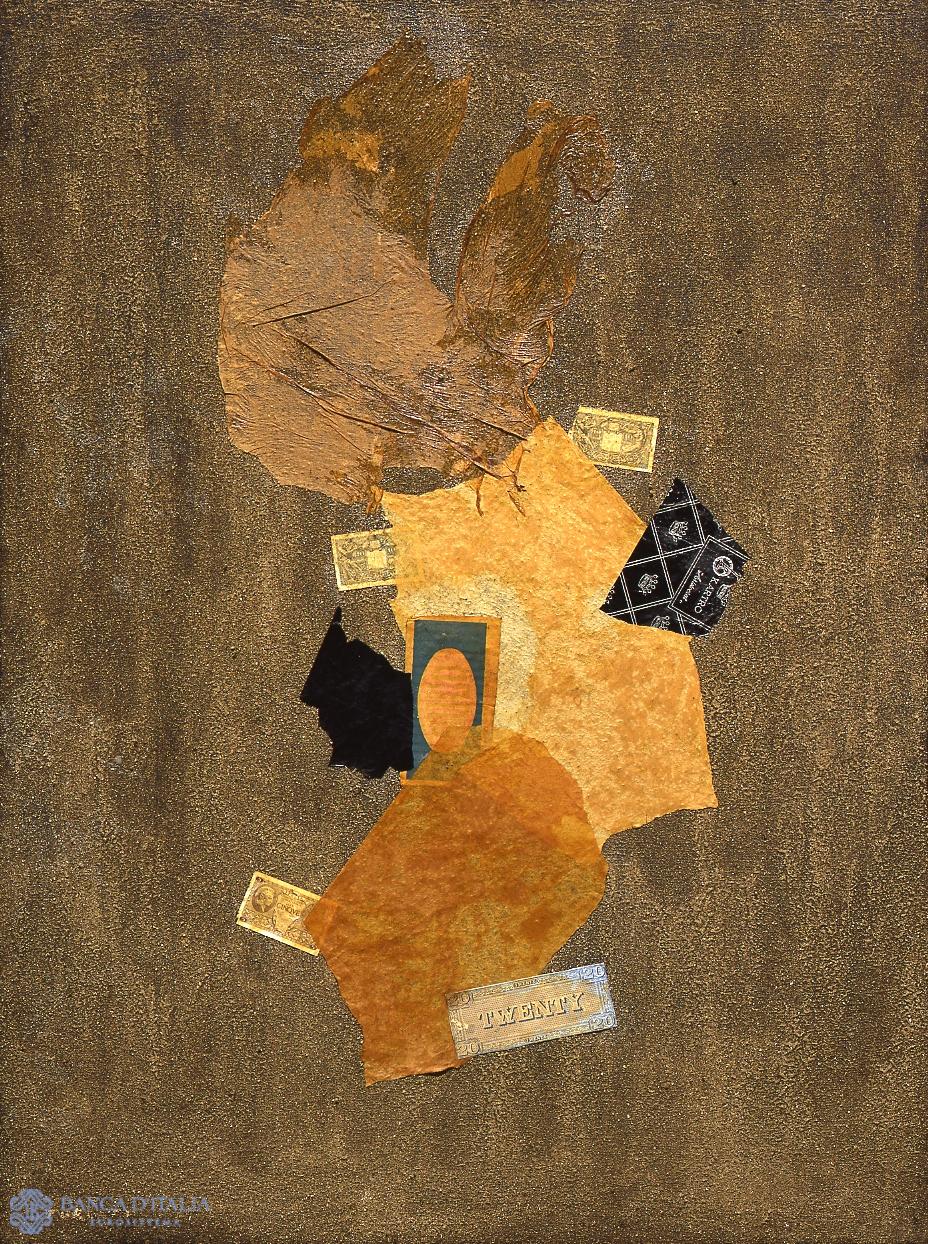A strange vertical figure composed of scraps of paper and paper money, rising enigmatic above a sandy background, without shadow. Once again, the image stubbornly seeks the surface, shuns all illusion of depth that would bind it to the world. Yet Turcato recounts that it was precisely out of the memory of a real occurrence (the procession of a statue of St. Rocco on which the faithful affixed, as it went by, prayers for grace and cash donations) that arose the idea for a short series of works (including this one) ironically reprising the collage technique, first used by the 20th-century avant-garde of Picasso and Braque.
However, the origin of these images (and other similar ones that would follow, such as Tranquillanti per il mondo) – if any predecessors at all can be plausibly invoked – lies not so much in the early Cubist milieu as in the Dadaist area, and possibly its surrealist strand in Schwitters or Pacabia. Certainly as the decades drew to a close Turcato achieved a markedly unorthodox, original and wholly personal form of irony. Through his ever-present smile at the things he touched, he found the way to skirt the academicism that might have threatened his choice of abstract art.
Giulio Turcato, Lenzuolo di San Rocco
Lenzuolo di San Rocco
20th century AD
Painting
Abstract

Artist
Date
1958 - 60
Material and technique
Oil and collage on canvas
Measurements
130 x 96 cm
Compiler
Fabrizio D'Amico
